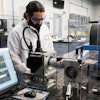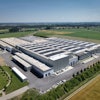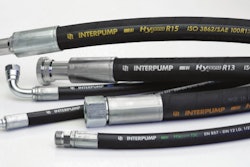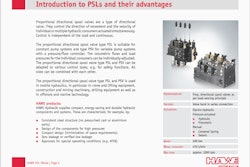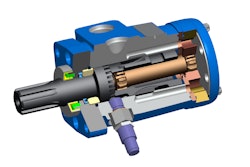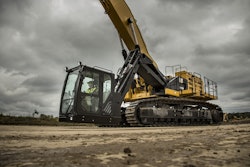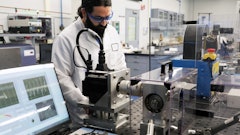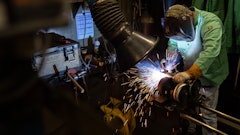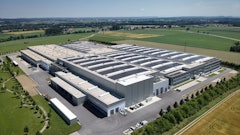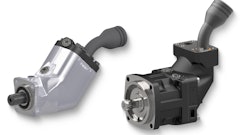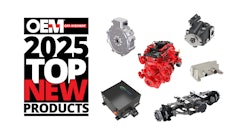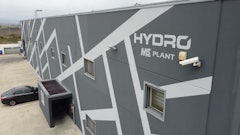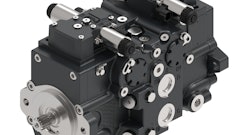According to Jon Murphy, Economist at ITR Economics, the worst of the economic decline is likely over, or nearing the end, and there are starting to be signs of positive market conditions. While the start of 2016 has not been has good as many have hoped, he said during a recent National Fluid Power Assn. (NFPA) webinar that the second half of 2016 is expected to be stronger.
Next year (2017) is expected to be the best of the coming years for the economy. Broad-based growth is expected, though it will be relatively mild in comparison to some previous cycles. Mining activity is expected to pick up in 2017, as will construction activity. Retail sales will also continue expanding. “2017 will be the choice year over the next three years,” said Murphy.
For 2018, the year is anticipated to show growth overall, but Murphy said the first half will be better than the second. By the second half, the economy will start to see some weakness, especially in the fourth quarter as the U.S. economy approaches its next macro-economic recession in 2019. Murphy noted this recession will not be devastating like the 2008 one was; it will also not be as bad as the one which happened in 2001 but instead be more on par with the recession which occurred in the early 1990s, with a 1.2% decline expected. However, this is still largely theoretical as it’s too early yet to determine exactly when or how this recession will occur.
ITR’s long-term business cycle theory predicts a macro-economic recession about every 10 years, the last one being in 2008. Over the next year, some of the long-term indicators will provide a clearer picture as to the actual timing of the recession and what may trigger it. Currently ITR is predicting the recession will be consumer and inflation driven, and that interest rates towards the end of 2018 may also be a contributing factor.
Signs of growth
Currently, the construction side of the economy, in regards to existing home sales and housing starts, is positive, as well as non-residential construction. Murphy said people have jobs and are seeing wages rising, making them more confident to make big purchases, such as on homes and cars; when consumers are confident enough to go out and purchase large items it’s a good indicator for the economy as a whole because more spending leads to more demand which in turn leads to a need for manufacturing more goods.
Non-Defense Capital Goods New Orders, a leading indicator for many manufacturers and the overall economy, has shifted into a recovery stage. While new orders are weak and below year-ago levels, Murphy said there are signs of recovery forming, such as the fact that businesses are tentatively starting to purchase more capital equipment in preparation for increased manufacturing demand.
New orders are expected to improve in the last half of 2016 and into 2017, and through the first half of 2018. This indicator will be one of the big growth drivers for U.S. Industrial Production, as well as manufacturers. “We’re seeing these green shoots,” said Murphy. “It takes a little while for a green shoot to become a flower, and it’ll take a little while for these green shoots of recovery to transform into accelerating economic activity, but the process has begun and the long cold winter is coming to an end.”
While there are positive signs, there are still some areas of concern in the U.S. economy. Commodity prices are the biggest, said Murphy. Though there was a rise in oil prices in the past couple of weeks—they recently hit $50 a barrel for the first time this year—ITR does not foresee commodity prices continuing to rise because there is still oversupply in many markets, such as steel and oil. Commodity prices will continue to be a concern through the end of 2016, affecting those who work in the mining and oil & gas markets.
The stock market has been of concern over the past year, as well, and continues to be jumpy. The varied way businesses report their finances and day-to-day news make it difficult to read, said Murphy. Once that turns around, though, it will help to further drive the new orders trend in a positive direction.
South America is yet another area of concern. At best, ITR predicts its economy to flat line as not much growth is expected for the region. This will affect commodity prices, currency exchange rates and potentially export demand for manufacturers who sell products in the region.
Which markets have the best potential?
Consumer-facing industries will be the greatest area for opportunity and growth in 2016, with industrial seeing more improvements in 2017. With this will come recovery trends for fluid power and other manufacturers working within the heavy-duty equipment industries.
Despite residential and non-residential construction doing well, construction machinery production is a weaker segment at the moment. Murphy said this is due in part to the way the equipment is defined. It includes surface mining equipment, so the downturn in the mining industry has contributed to the weakness. There’s also a lot of competition from imports. The U.S. dollar has been strong for the past year, making it easier for international companies to sell their products cheaper in the U.S. market. On the export side of things, the strong U.S. dollar makes it more expensive to sell U.S. products in foreign markets. Many parts of the world are also dealing with their own economic recessions, further weakening demand for exports.
However, some improvement for the construction equipment segment is expected in the second half of the year and into 2017.
Mining and oil & gas will continue to be weak. Sustainable commodity price rises will be necessary for miners to buy into a recovery, said Murphy, as many companies were hit hard by the downturn. Additionally, there is a lot of used equipment in the market which will hinder the need for new mining and oilfield equipment. Next year and 2018 are expected to be better years for production. Due to the large amount of used equipment in the market, Murphy said repair/refurbishment could be a stronger area of opportunity for manufacturers.
Farm machinery is starting to show signs of recovery, with some rise in production expected for the end of 2016 and into 2017. Americans are consuming more food, increasing the demand for crops. Demand for organic produce, as well as malt and barely due to the craft beer movement, is growing, further aiding the rise in equipment production. As global economies improve, so will exports of farm machinery.
Niche farming markets could be a growth opportunity, as well. Rising prices for specialty crops such as almonds and grapes for wine are increasing demand for the specialty equipment necessary to harvest them.
As these equipment segments continue their slow progression upwards, component suppliers such as fluid power manufacturers will also start seeing growth. Total shipments for the fluid power industry are forecast to be down 4% for the year as a whole compared to 2015, said Murphy. Improvements will start to show in the second half of 2016, and better activity in 2017 and the first half of 2018.
Global outlook
Europe is currently the best global market. There are a couple areas of concern, but overall there’s growth across the content. Murphy said it will slow as the year continues, but in general will be better for the next couple of quarters, even better than the U.S.
In Asia, Japan is in the midst of a recession while Southeast Asia is a mix of growth for some areas and decline for others. The Industrial Production data released by China shows it’s growing at 6.0%, but the country has cut back on its consumption of commodities and raw metals. China consumes about 50% of steel, copper and other metals, and that has weighed on commodity prices, said Murphy. Until the country turns around, there will continue to be a struggle for commodity prices to achieve a sustained rise.
Brazil is the largest problem area in South America due to the political issues it is currently facing. Argentina’s debt problems also make it an area of concern, as well as Chile and Peru which have economies tied to commodities.
North America, Europe, parts of Southeast Asia and Asia in general are expected to be the areas of growth for the global economy for the remainder of 2016 and continuing on into 2017.


